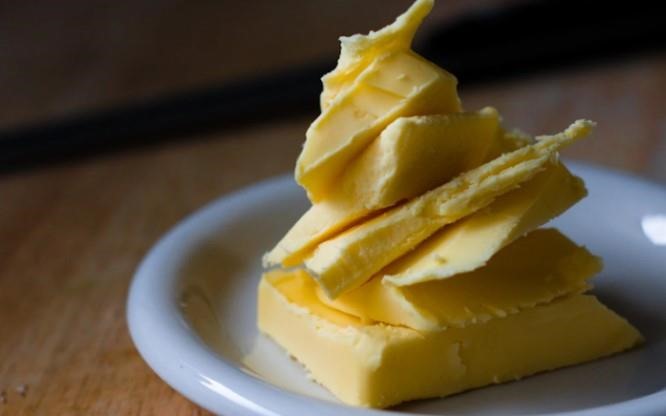
Demand for butter is up, but supply is down.
Inside Harold Howrigan's barn on his farm in Sheldon, Vermont, the cows are still waking up. It's early morning, and the longtime dairy farmer is tending to farm chores.
"You know, dairy is a 24/7 kind of a job, year-round, and that's not for everybody," Howrigan says. "So you really have to like it to do it."
In his decades working in the dairy industry, Howrigan, who is a board member for the Dairy Farmers of America, says the price of dairy products has often fluctuated.
Recently, from 2015-2020, a quickly growing export market in Europe tanked U.S. milk prices, and since the pandemic, milk production is down, partly because of a lack of labor.
"And so we're struggling here for labor, and everyone is," he says. "So that kind of puts a lid on what you can do and how fast you could grow."
Right now, the economics around milk prices, labor and supply and demand is impacting one dairy product in particular — butter.
In their annual Dairy Outlook from February, the U.S. Department of Agriculture predicted that the price of butter would stay high throughout 2022. They cited a "strong demand for premium butter" as a factor.
The agency also said the pandemic forced butter plants to skip production runs, due to COVID cases in their staff.
Catherine de Ronde, vice president of economics and legislative affairs for Agri-Mark, says while demand for butter is up, supply is way down.
"We have low, low inventories of butter, and then it happens to be right at the same time that we have all of this demand for holiday butter," she says. "And so it kind of becomes this perfect storm that raises butter prices up high."
She says that because milk prices were so low during the pandemic, farmers were not able to grow their operations. The amount of milk produced fell from 2021 to 2022.
Because of the lack of supply, not as much milk has been sent to butter powder plants, where butter is made.
But de Ronde says it’s not time to panic.
Click here to see more...